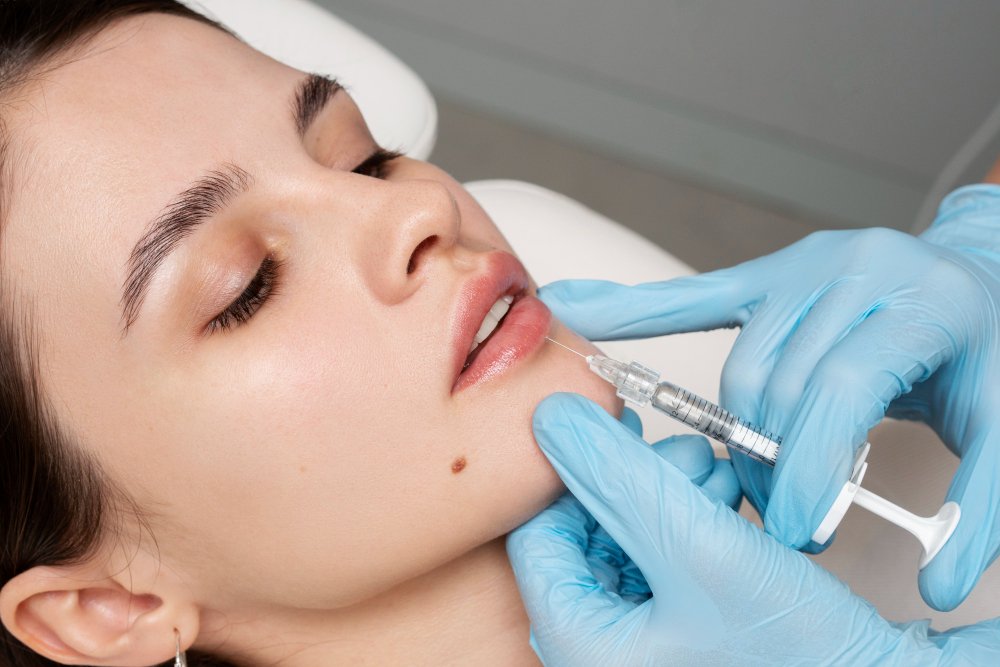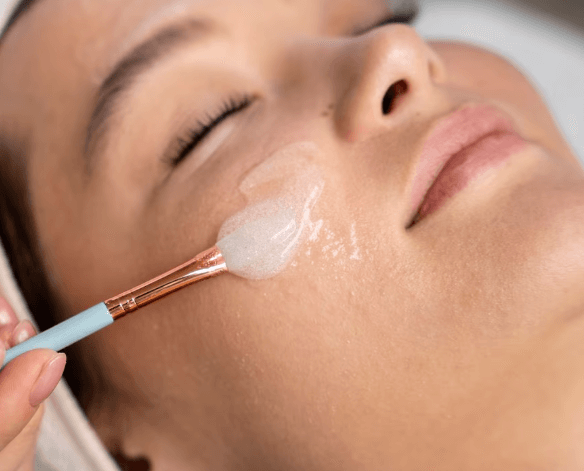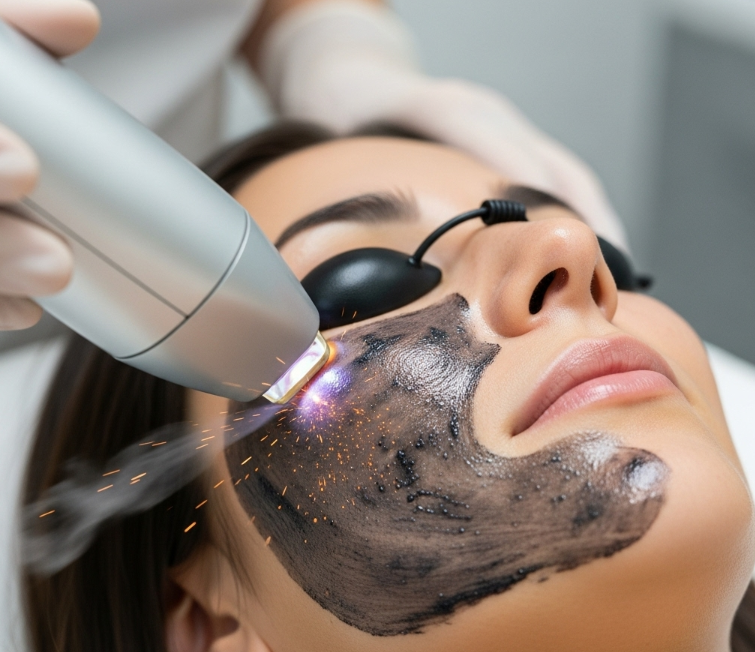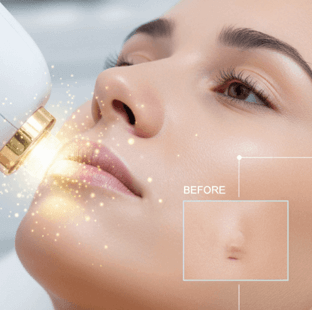Treatment Overview
Vertical Lengthening Genioplasty involves cutting and repositioning the chin bone (mandibular symphysis) downward to increase the vertical dimension of the lower face. Unlike traditional genioplasty, which primarily adjusts chin projection (forward/backward), this technique focuses on increasing chin height while maintaining or enhancing projection.
Surgeons in Korea perform this surgery using intraoral incisions (no external scars) and secure the new bone position with titanium plates and screws. The result is a natural, elongated chin that enhances facial symmetry and vertical balance.
Purpose & Benefits
This procedure is ideal for achieving:
- A longer, more defined chin that complements the rest of the face
- Improved vertical facial harmony (especially for those with a short lower face)
- A stronger, more elegant side profile
- Correction of congenital or post-traumatic chin deformities
- Permanent, implant-free results
It is also commonly performed as part of a comprehensive V-line contouring plan or to revise previously inadequate chin augmentations.
Ideal Candidates
Vertical Lengthening Genioplasty is suitable for patients who:
- Have a short or under-projected chin in the vertical dimension
- Feel their lower face is disproportionately small
- Have a “baby face” appearance due to chin deficiency
- Want natural, bone-based results instead of implants
- Are in good general health and have realistic expectations
Korean clinics use 3D scans and cephalometric analysis to determine if vertical genioplasty is the right choice.
Possible Risks & Complications
While vertical lengthening genioplasty is generally safe, potential risks include:
- Swelling, bruising, or discomfort in the lower face
- Temporary numbness in the chin or lower lip
- Infection (rare when proper care is followed)
- Asymmetry or dissatisfaction with the result (minimized through precision planning)
- Delayed bone healing in rare cases
Korea’s top facial contouring clinics use digital simulations and CT scans to minimize complications and predict outcomes accurately.
Surgical Techniques Used
Korean surgeons are pioneers in performing vertical genioplasty with highly advanced techniques:
- Intraoral Incision: No visible external scarring
- Vertical Osteotomy: The chin bone is cut, moved downward, and stabilized
- Titanium Fixation: Plates and screws ensure long-term bone stability
- Gap Filling: The space created by downward repositioning is often filled with bone grafts or allowed to regenerate naturally
- 3D Simulation: Detailed digital planning ensures ideal proportions and symmetry
These techniques allow for multi-dimensional chin shaping with natural outcomes.
Recovery & Aftercare
Recovery from vertical lengthening genioplasty generally involves:
- Swelling and mild discomfort for the first 1–2 weeks
- Use of a compression bandage to reduce swelling
- A soft or liquid diet for about 7–10 days
- Regular oral hygiene to prevent infection at the incision site
- Follow-up imaging to monitor bone healing and placement
Most patients return to normal routines within 2–3 weeks, with full results visible after 2–3 months as swelling resolves.
Results & Longevity
This surgery provides permanent, bone-based correction of a short chin. Benefits include:
- Improved vertical balance of the lower face
- Enhanced side and frontal profile aesthetics
- A more youthful, refined, and structured appearance
- No maintenance required, unlike implants or fillers
Korean surgeons prioritize proportion and subtlety, resulting in natural-looking yet noticeable improvement.
Treatment Process in Korea
The typical treatment journey for vertical genioplasty in Korea includes:
- Initial Consultation – Facial analysis using 3D scans, X-rays, and photo simulations
- Preoperative Planning – Custom surgical blueprint based on bone measurements
- Surgery – Performed under general anesthesia, typically lasts 1.5–2 hours
- Postoperative Monitoring – Immediate care, medications, and swelling control
- Follow-Ups – Check healing progress and ensure patient satisfaction
Korea’s top clinics also offer comprehensive international patient services, including translators, airport transfers, and recovery accommodations.
Cost Range
The average cost for Vertical Lengthening Genioplasty in Korea:
- $4,500 – $7,500 USD depending on the clinic, complexity, and whether additional facial contouring is included
- May also include pre-op consultations, 3D imaging, medications, and aftercare support
- Korea offers premium surgical care at lower costs than in the US, Japan, or Europe
Popular Clinics for Vertical Lengthening Genioplasty in Korea
ID Hospital
Specializes in complex facial bone surgeries, including vertical genioplasty and full jaw contouring with digital simulation.
Banobagi Plastic Surgery
Renowned for bone-based facial reshaping and customized chin surgery using advanced osteotomy techniques.
GNG Hospital
Experienced in performing three-dimensional genioplasty procedures with strong safety protocols and international patient services.
NANA Plastic Surgery
Known for their natural and feminine V-line results, often combining vertical lengthening with chin narrowing procedures.
VIEW Plastic Surgery
Offers precision-based chin surgeries with comprehensive 3D facial analysis and bilingual support for foreign patients.
Final Thoughts
Vertical Lengthening Genioplasty in Korea is a powerful solution for individuals seeking to correct a short or underdeveloped chin while achieving a longer, more balanced lower face. With expert surgical skill, advanced digital planning, and artistic facial analysis, Korean clinics deliver safe and natural-looking outcomes tailored to your unique features.
If you’re looking to enhance your facial proportions and define your chin permanently, Korea is one of the best places in the world to do it — with world-class results at accessible prices.




